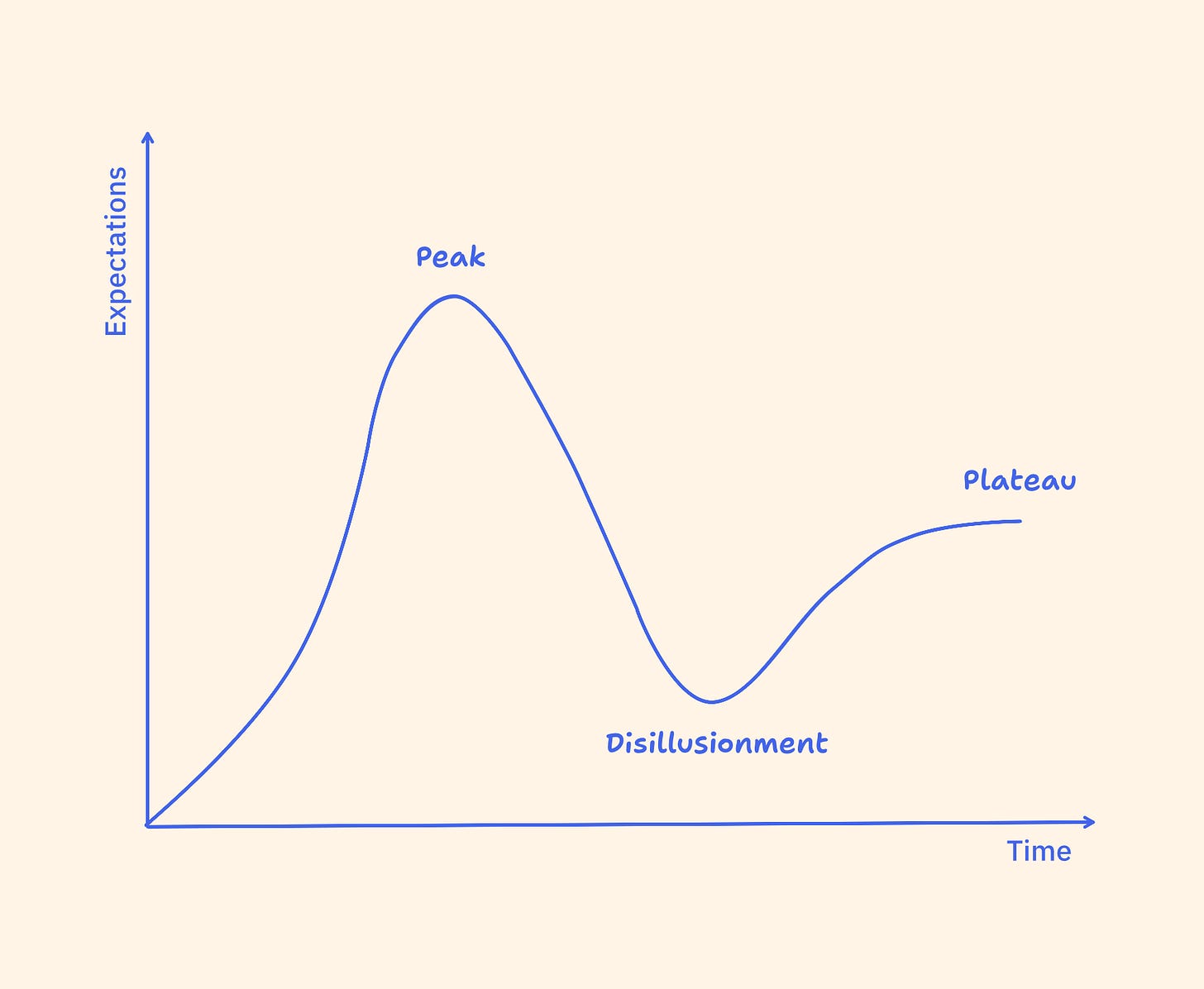Over the past month, the volume of AI chatter on social media channels has intensified. While the conversations earlier this year carried a kind of moderate excitement, more recent conversations seem to be trending towards hyperbolic arguments and increasing polarisation. We seem to be reaching peak hype, with conversations split between euphoric optimism and outright dismissal.
It’s not hard to see why people end up on either side of this divide. The flood of overblown headlines and hot takes has created its own counterreaction, but at the same time, it would be unwise to dismiss a technology that has the power to reshape how we work and think.
Personally, what strikes me most is how hype cycles suck the oxygen out of the room. The overexuberance and divisiveness of opinion leave many of us either exhausted or indifferent. In turn, we fail to take a more moderate view, which would otherwise pave the way for reasoned positions. And in my personal view, it slows down practical discovery and adoption.
Making sense of the noise
The Gartner hype cycle describes the stages technologies tend to move through: the trigger, the peak of inflated expectations, the trough of disillusionment, and eventually the plateau of productivity. It’s difficult to say exactly where we are right now, but it’s probably safe to say we’re not near the bottom.
Part of the challenge of any hype cycle is that it distorts the signal. Genuine breakthroughs get buried under a pile of announcements, predictions, and recycled opinions. But formulating your own opinions, and relating a technology back to your context, arguably matters more here than anywhere else.
That’s where experimentation comes in. Trial and error, especially in the midst of a hype cycle, is often the most elucidating filter we have. It helps us make sense of the value of a new technology, even in the face of detractors and overpromises.
Pragmatic acceptance
Instead of being pulled up and down through the peaks and troughs of the hype cycle, there is a steadier approach we can take: pragmatic acceptance. By pragmatic, I mean dealing with technology sensibly and realistically, and grounding our perspective in practice rather than theory. It is less about chasing promises and more about discovering what actually holds up when tested in context.
This matters because new tools and technologies often land with bold and inflated claims. Pragmatic experimentation helps us look past the promises and ask a simple question: can this make our present systems more efficient and dependable, or does it add another layer of noise? By testing in practice, we gain a clearer view of both the strengths and the shortcomings before running into hidden trade-offs. That clarity helps us adopt what genuinely improves reliability and trust, without unnecessary disruption.
In practice, we could:
Start small. Try tools in limited contexts before scaling up.
Measure outcomes. Look for demonstrable efficiency and reliability, not just claims.
Stay flexible. Experiment widely, and avoid getting locked in with a single vendor.
Stay grounded. Keep returning to the fundamentals of dependable, reliable, and trustworthy systems.
Instead of sitting on the sidelines and waiting to see how risks play out for others, pragmatic acceptance is about leaning in just enough to test ideas in our own context. It’s a nudge to step beyond theory and try things in practice, even if only in small, cautious steps. Which brings to mind Yogi Berra’s wry observation: “in theory there is no difference between theory and practice. In practice there is.”
A steadier way through
Hype cycles will continue to rise and fall, but we can choose how we move through them. We can spend our energy chasing every claim, or tune out entirely and risk missing what genuinely matters. The more measured path lies somewhere in between: experimenting in small ways, paying attention to outcomes, and holding new tools to the same standards that have always made systems dependable.
In the end, this is less about keeping up with the noise and more about working at a sustainable pace. A grounded posture gives us the space to notice what is useful, discard what is not, and integrate change without losing sight of the fundamentals. To me, that is the essence of being a pragmatist: curious enough to explore, sceptical enough to test, and deliberate in adopting what’s truly worthwhile.




